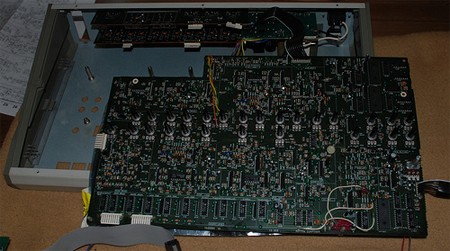Roland’s Alpha Juno 2 is an analog, polyphonic synth made in the mid-80s. While it isn’t as capable as the massive synths made around that time, it was very influential synth for the techno scenes of the late 80s and early 90s.
[Jeroen] is lucky enough to have one of these synths, but like all equipment of this era, it’s showing its age. He wanted to replace the character LCD in his Alpha Juno 2 with an OLED display. The original character LCD was compatible with the Hitachi HD44780 protocol, and still today OLEDs can speak this format. What should have been an easy mod turned into editing hex values on the EEPROM, but he still got it to work.
While the original character LCD could display one line of 16 characters, the ROM in the synth didn’t know this. Instead, the display was organized as a 2×8 display in software, with line one starting at address 0h, and line two starting at 40h. For a drop-in replacement, [Jeroen] would need a display the characters organized in this weird 2×8 format. None exist, but he does have a hex editor and an EEPROM burner.
With the Alpha Juno’s firmware in hand thanks to someone who does a few firmware hacks to this synth, [Jeroen] had everything he needed. All that was left to do was going through the code and replace all the references to the second line of the character LCD.
After burning and installing the new ROM, the OLED display was a drop-in replacement. That meant getting rid of the whiney EL backlight in the original display, and making everything nice and glowy for a few nights on a dark stage.


















